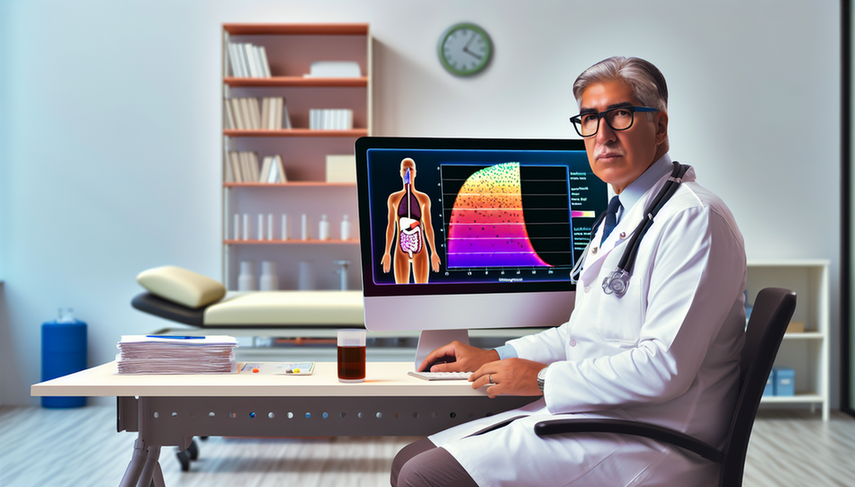Gastroesophageal Reflux Diagnosis: pH Monitoring, Endoscopy, and Differential Diagnosis of Heartburn

The diagnosis of gastroesophageal reflux (GERD) presents a clinical challenge due to the variety of manifestations it can exhibit. Typical symptoms include heartburn and regurgitation, but atypical symptoms such as chronic cough and laryngitis may also occur. Accurate identification of GERD is crucial to prevent complications such as esophagitis, Barrett's esophagus, and esophageal adenocarcinoma. In this context, esophageal pH monitoring has become an essential diagnostic tool, especially in cases where symptoms persist despite empirical treatment with proton pump inhibitors (PPIs).
24-hour esophageal pH monitoring is considered the gold standard for diagnosing GERD, allowing for continuous measurement of pH in the esophagus and correlation of reflux episodes with patient symptoms. This technique is particularly useful in patients with atypical symptoms or those who do not respond to PPI treatment. Furthermore, the combination of pH monitoring with multichannel impedance (MII-pH) has enhanced diagnostic capability by detecting both acid and non-acid reflux, which is crucial for the differential diagnosis of conditions such as non-erosive reflux disease (NERD) and functional heartburn [1].
Endoscopy is another important diagnostic tool, although its sensitivity in detecting GERD is limited, as many patients present with normal esophageal mucosa. However, it is essential for ruling out other pathologies such as eosinophilic esophagitis and for evaluating reflux complications. Esophageal manometry also plays a role in the differential diagnosis, helping to identify esophageal motility disorders that may simulate or coexist with GERD, such as achalasia syndrome [2].
In conclusion, the diagnosis of GERD requires a multidisciplinary approach that combines clinical history, response to empirical treatment, and specific diagnostic tests such as esophageal pH monitoring, endoscopy, and manometry. Accurate identification of the type of reflux and its correlation with symptoms is fundamental to guide treatment and improve patient quality of life. The evolution of less invasive and more precise techniques promises to further enhance the management of this prevalent condition.
Referencias
- [1] Diagnosis of GERD in typical and atypical manifestations.
- [2] The Utility of Esophageal Motility Testing in Gastroesophageal Reflux Disease (GERD).
- [3] Gastroesophageal Reflux Disease: A Review.
- [4] Refractory Gastroesophageal Reflux Disease and Functional Heartburn.
- [5] Extra-esophageal manifestations of gastroesophageal reflux disease: diagnosis and treatment.
Created 2/1/2025
